|
Virginia City, Nevada, is a destination that offers something for everyone. Whether you’re a history buff or simply looking to experience the charm of a bygone era, Virginia City delivers.
Its well-preserved buildings, engaging museums, lively festivals, and unique attractions make it a place where the past is always present, waiting to be explored and appreciated.
A visit to Virginia City is not just a trip back in time but a celebration of the enduring spirit of the American West.
| 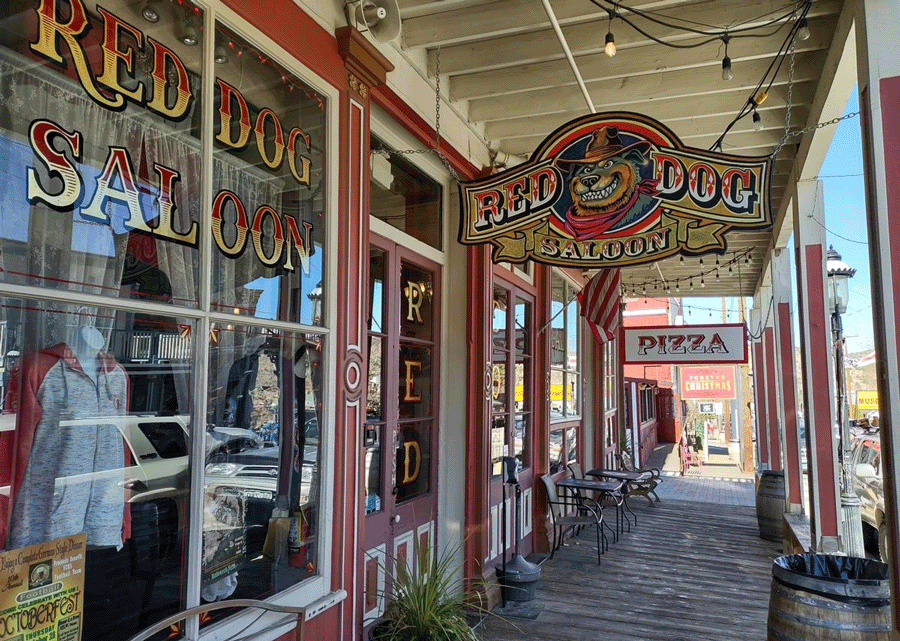 | |
Red Dog Saloon
Virginia City, Nevada, is well known for many things: the V&T railroad, prosperous silver mines, and as the place where Mark Twain began his writing career. One lesser-known fact about Virginia City is that it played an important role in the origins of psychedelic rock n’ roll.
By the mid-1960s, Virginia City’s cheap rents attracted young, idealistic hippies in droves. In 1965, a group of friends purchased an old hotel and transformed it into the Red Dog Saloon. Travus T. Hipp, recruited bands in San Francisco, while artist Bill Ham developed a suitably trippy lightshow that could be projected onto the bar’s wall. Before long, the place earned a reputation for its live shows, as well as the LSD and peyote that often accompanied them.
Among the bands who played at the Red Dog Saloon were The Charlatans, Quicksilver Messenger Service, and Big Brother & The Holding Company, which would later go on to work with Janis Joplin. Known as The Red Dog Experience, this concert series lasted all summer long. Some of the Red Dog cohorts took what they learned in Virginia City and went on to produce shows for the Grateful Dead, Jefferson Airplane, and Country Joe and the Fish, among many others.
These days, the Red Dog Saloon is still a cornerstone of the community. Live music is still on the lineup at the regular open mic nights. The walls of the saloon are festooned with posters from some of the many acts which have graced the stage over the years.
| 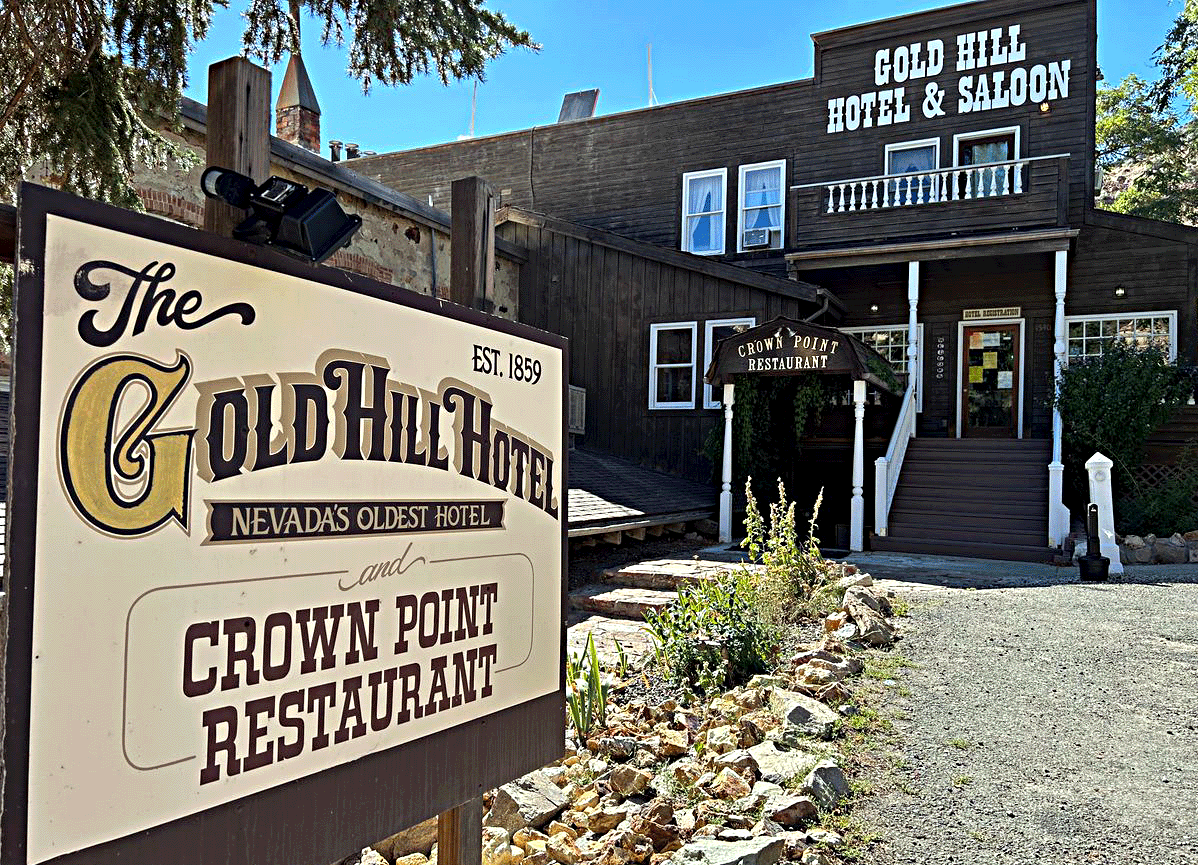 | |
Gold Hill Hotel
The mining camp of Gold Hill sits on the southern extension of the Comstock Lode and was always overshadowed by Virginia City to the north. Even so, it had its share of top-producing mines, and some mining even continues today.
Gold Hill is also the site of the oldest hotel in Nevada. The oldest part of the hotel, a brick and stone structure, dates to the early 1860s and is still in use. It now holds the great room (lobby) and bar. The wooden additions on the south and west, which house the current rooms and restaurant, are much newer, dating from the late 1980s.
On April 7, 1869, a fire started around the 800 feet level in the Yellow Jacket mine, probably from a misplaced candle (the only illumination technology in those days). It rapidly spread to the adjacent mines as the workings were interconnected in the subsurface, and at least 35 miners perished. This remains the worst mining disaster in Nevada history to this day.
The hotel and associated mine cabins are said to be the site of paranormal activity and have been featured in several television programs.
| 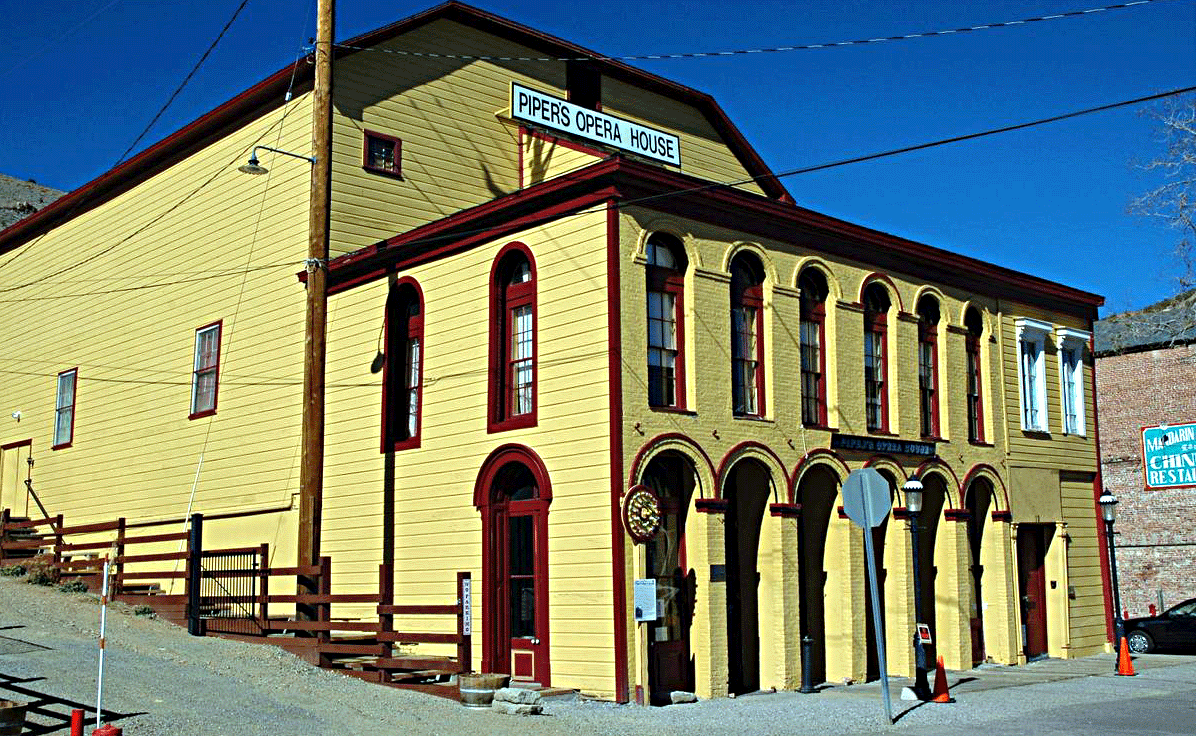 | |
Piper's Opera House
Virginia City was not only a big, splashy Warner Bros. movie and setting for the TV show “Bonanza,’ but back in the days of the Comstock Lode it was an important stop on the western theater circuit. And the center of culture and civic pride was Piper’s Opera House.
In the late 19th century, at the height of the Nevada silver rush, the population reached 25,000. That meant a lot of Comstock Loders to keep occupied.
Piper’s seated nearly a thousand people, and typical of “opera houses” of the 19th century, it rarely, if ever, saw an opera grace its stage. It was an eclectic venue - more of a music hall - but never too booked to find room for a political debate or revival meeting, a down-and-dirty bear fight, society dance, or even the occasional boxing match.
Piper’s hosted the best-known performers of the time, including Edwin Booth, and Lillian Russell. Samuel Clemens gave some talks too - a local newspaper man who not only called Virginia City home, but here turned himself into Mark Twain. In later years, when Vaudeville took over, big acts like Enrico Caruso, Al Jolson, and Harry Houdini all made sure to book themselves into Pipers.
The Opera House that stands today was built in 1885, but its history goes back to the 1860s. John Piper, a German immigrant, legislator and one-time mayor, bought his first theater in 1868. It was destroyed in 1875 in Virginia City’s Great Fire, a blaze that burned out a full square mile of the town. Piper built a new theater a couple of years later, and that one burned down too. But third time’s a charm, and in 1885 he built again, and the place has been standing at the corner of Union and B ever since.
It’s now on the National Register of Historic Places and the boards are still being trod in this vestige of the old days of music hall, Vaudeville, bear fighting and silent movies. You know… the good old days.
| 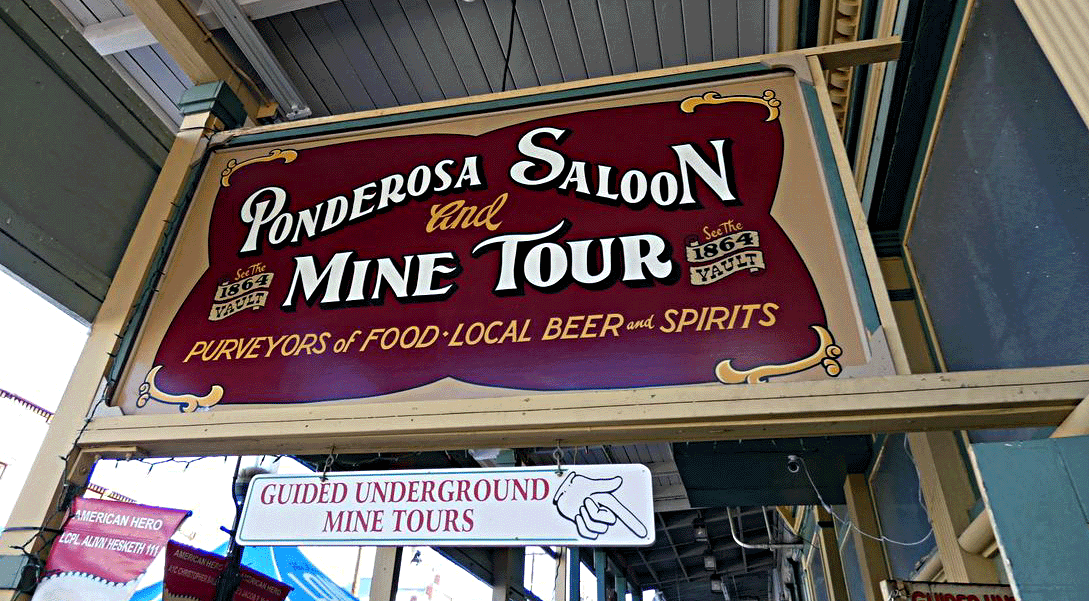 | |
Ponderosa Saloon
A fully-functional saloon in Virginia City, Nevada contains an 1860s bank vault and underground mine.
The beloved watering hole has been offering tours of the mine shaft since the 1900s.
Virginia City, Nevada used to be a heavy mining town, and was pocked with tunnels dug by voracious miners hunting for silver and gold. The Best & Belcher mine was not profitable in the gold rush of the 1800s, but became profitable 100 years later in an entirely different way. The owners of the Ponderosa Saloon realized that the mine shaft of the Best & Belcher mine was only a short way away from their bar, so they dug a tunnel to the abandoned mine shaft and began offering tours.
The saloon also features an old walk-in bank vault, and the now 150-year-old establishment offers up tours of both the vault and the mine. The 25-minute tour of the mine guides you through the shaft and the more than 300 pieces of vintage mining equipment on display. After the tour, you can grab a cold drink and a hot dog from the restaurant above.
| 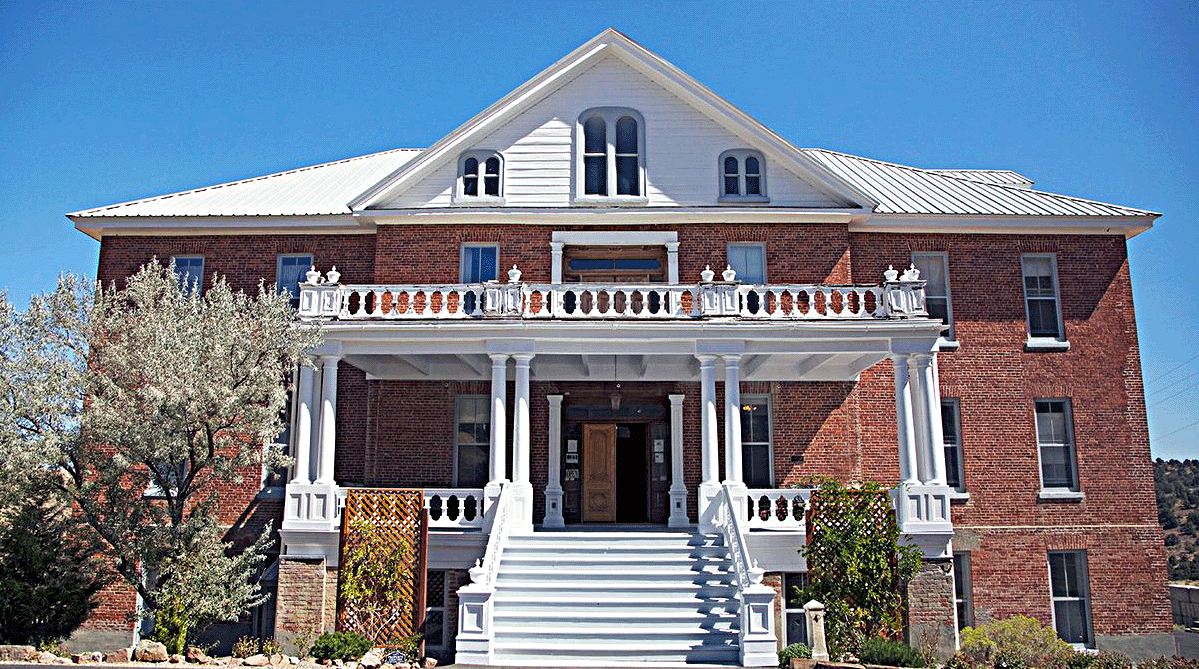 | |
St. Mary’s Art Center
Nestled in the Virginia Range Mountains atop a land pockmarked with abandoned mines is a vibrant hub for art. Today, St. Mary’s Art Center is filled with creative minds and various exhibits. But the 19th-century building wasn’t always so lively.
The main building was constructed in 1875 as a hospital for miners. It opened in 1876 as the St. Mary Louise Hospital. Up to 70 patients could be crammed within its 36 rooms. It was a fairly luxurious hospital - for $20 a week, patients could have their own private room complete with food, medical attention, and both hot and cold running water - but by the late 1890s, the local mining population had dropped significantly. Though the hospital struggled in the gold rush’s waning days, it managed to stay in business until the 1940s.
After it closed, the abandoned building was left to rot and decay. That is, until 1964, when Father Paul Meinecke and Louise Curran joined up with a group of artists to breathe new life into the place and open it as an art center. More than 30 people attended its first painting class, and business continued to boom thereafter. The art center became a thriving retreat for artists, who transformed the old hospital into a stage for their creative endeavors.
| 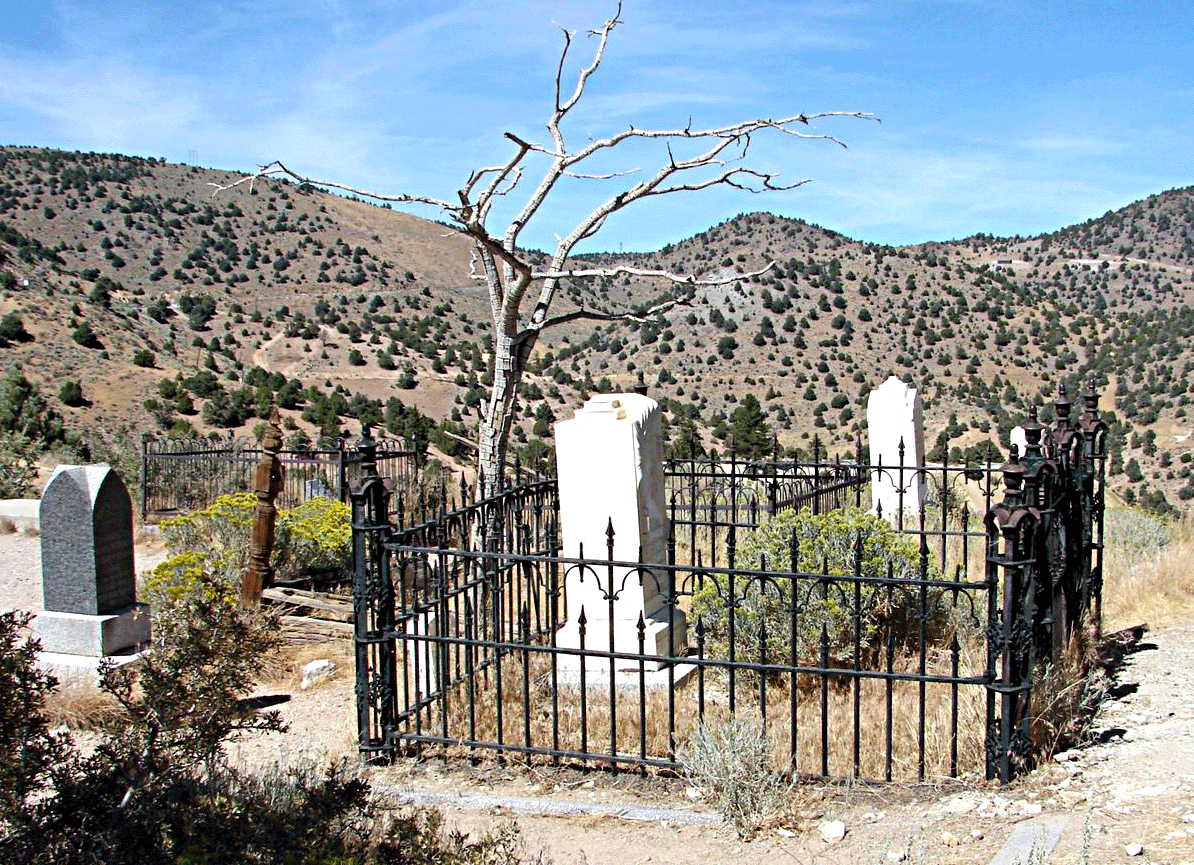 | |
Boot Hill
Boot Hill is the given name of many cemeteries - it was a common name for the burial grounds of gunfighters, or those who "died with their boots on" - or violently.
Virginia City, home of Comstock Lode, the United States’ first major discovery of a silver ore deposit in 1859, is home to several captivating cemeteries.
Located side by side over many acres within the boundaries of the Virginia City National Historic Landmark, the cemeteries memorialize the diverse laborers who made Virginia City a boom town. Just as society at the time was divided ethnically, religiously and professionally, the cemeteries are likewise divided.
The cemeteries were once a collection of well kept Victorian parks, an oasis of green in a harsh desert. Some credit these 19th-century cemeteries to be the predecessors to America’s national parks, though only glimpses of their former glory can be seen.
| |